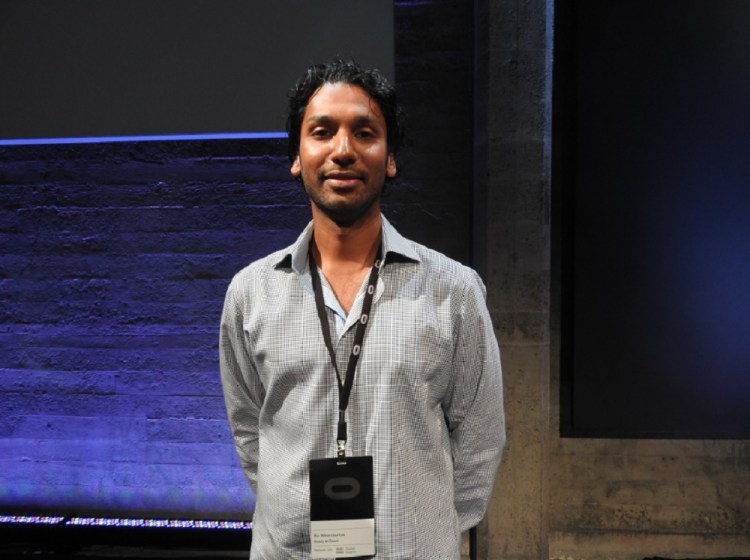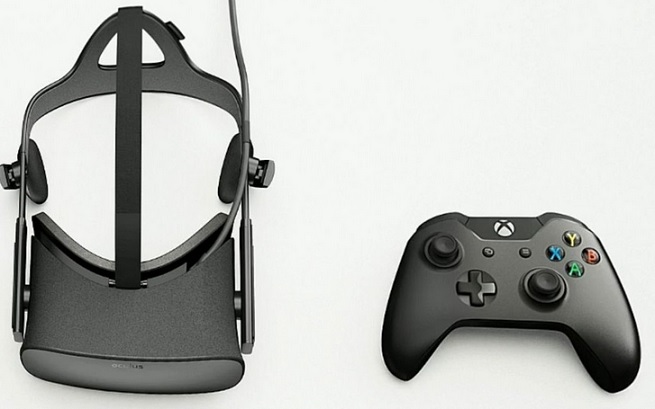With new platforms come new alliances. Ready At Dawn Studios made The Order: 1886 for Sony’s PlayStation 4 earlier this year. So you might expect the Irvine, Calif.-based studio to make a game for the Sony Morpheus virtual-reality headset.
But Ready at Dawn is prepping an exclusive title for the rival Oculus Rift, which is debuting early next year from Facebook’s Oculus VR division. Ru Weerasuriya, the president and chief creative officer of Ready At Dawn, announced the game on Thursday at the Oculus press briefing.
He said his company, now led by former Blizzard executive Paul Sams, is also working on another secret project. But he said that Ready At Dawn is in the early stages of making a game for virtual reality.
We caught up with Weerasuriya for an interview after the Oculus event. Here’s an edited transcript.
GamesBeat: Are you showing the game onscreen at all?
Ru Weerasuriya: No, we’re not showing it right now. We’ve been head deep in something else, as you know. But this is going to be an interesting partnership. We’re very early on, in the concept and prototype phase right now. We have a lot of things working. The switch to VR from where we were was interesting, but it’s been very fruitful on the game side.
GamesBeat: You guys were in Sony’s camp just a little while ago. Are you also supporting Morpheus?
Weerasuriya: We can’t really talk about that. For us, the big thing about what we’re trying to do here—This game specifically that we’re working on is going to be exclusive to Oculus. That’s one of the big things that attracted to me this. Jason being at the head of their studio makes it so we have someone who truly understands what developers do and what they can make on the platform. That made the conversation with Oculus very easy.
GamesBeat: You could see a triple-A experience on this, then?
Weerasuriya: I think so. That’s the beauty of it. Seeing what they’ve already been able to release on GearVR, some of the things that are breaking the box in the form of little, casual games and breaking into bigger games, I think Rift will allow us to do a lot of cool things and leverage what we’ve learned in the past.
GamesBeat: Would you focus on the touch controls, or something that would use both the controller and the Oculus Touch?
Weerasuriya: We would probably want to leverage both. It depends on who likes what and who’s more comfortable with what. Knowing that the controller is there, especially to break the next boundary to VR, that’s definitely something we’d love to see and leverage for what we do.
GamesBeat: What do you already know you can do beyond what you can do in a console game?
Weerasuriya: There’s one big thing that happened very early on when we did our first demo internally. There was always something that we’ve tried to reach in what we’ve always done, which is a connection to human emotion inside the game. Can you truly make someone feel like they’re there, that someone is talking back to them? We tried. We spent a lot of time breaking certain barriers in what was possible on console, whether it was facial work or the resolution of the characters we were able to bring together. But there was always a barrier. It’s a 2D screen. You always have that disconnect.
The first time you see somebody responding to you is pretty cool. There’s something to be said for feeling like a virtual person is right there. It feels like it’s there. It’s not just looking at a flat screen. I can look around their face while they’re talking to me. That’s cool.
GamesBeat: How do you feel about the technical challenges – dizziness, making it move fast enough, things like that? Technologically, is it there yet?
Weerasuriya: We have to think about that in every decision we make. You’re right that there are things we have to make sure we address when it comes to movement or sickness. The interesting thing is, a younger generation seems to be less prone to getting sick, which is a cool thing to think about for the future. At the same time, we’ve made a lot of decisions that leverage VR without sacrificing gameplay. We can take away that nauseous feeling through the gameplay we’ve chosen.
The game we’re making now is built for VR more than anything else. We didn’t say, “Hey, we have this cool game already, let’s see if it works in VR.” We’ve been analyzing VR for a while now and trying to figure out the things we need to do. The gameplay mechanics evolved from that. There’s no doubt that we’ll be addressing those issues as we keep developing.
GamesBeat: Somebody mentioned that if you go up to a wall and look at it closely now, you’re going to have to see something that looks like a wall, not something that looks all fuzzy.
Weerasuriya: Absolutely. How do you make those things happen? If you expect something to move and it isn’t moving because you have collision right there, how do you make it so that my head moves, but my avatar’s head stops for the collision? They’re interesting questions. But those are challenges like what we had even on consoles. It’s just a new set of challenges that we’re eager to tackle now.
VentureBeat's mission is to be a digital town square for technical decision-makers to gain knowledge about transformative enterprise technology and transact. Learn More



